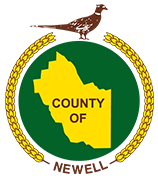Downy Brome: A Serious Threat to Our County’s Grasslands
Downy Brome (Bromus tectorum) is an invasive, noxious weed that poses a significant threat to the County of Newell’s agricultural lands and native grasslands. Designated as a noxious weed in Alberta since 2010 and regulated locally since 1994, Downy Brome outcompetes native vegetation, increases wildfire risk, and spreads rapidly through contaminated equipment and soil movement.
Why is Downy Brome a Problem?
- Early Growth & Competitive Advantage: Downy Brome germinates in fall or early spring, establishing before native grasses and crops. This gives it a competitive advantage, reducing forage availability for livestock and wildlife.
- Fire Hazard: By late June, the plant dries out completely, becoming highly flammable and contributing to the risk of wildfires.
- Difficult to Eradicate: Once established, Downy Brome spreads aggressively, making long-term management essential to prevent its dominance.
How Does Downy Brome Spread?
Downy Brome is primarily spread through:
- Contaminated cultivation equipment
- Uncleaned mowing equipment
- Haying operations that transport seed
- Soil transfer from infested areas
How to Control Downy Brome
Landowners are required under Alberta’s Weed Control Act to take active measures to control the spread of Downy Brome. Here are the best management strategies:
1. Mechanical Control
- Hand-pulling is effective for small patches but must be done before seed maturity.
- Mowing helps suppress growth when timed correctly—after the seed head develops but before seeds reach the milk stage (when they turn a silver hue). Ensure mowers are cleaned to avoid spreading seeds to new areas.
2. Chemical Control
- Non-selective herbicides can be applied in late fall (if Downy Brome has already emerged) or early spring before seeding.
- In-crop herbicide options exist but are limited. Identifying infestations early allows for targeted applications.
3. Cultural & Preventative Control
- Soil disturbance can help manage growth, but it should be done carefully to avoid spreading seeds.
- Equipment sanitation is critical—always clean tillage, mowing, and haying equipment before moving between fields.
- Competitive planting of perennial grasses can help suppress Downy Brome by reducing available space and resources.
Get Help Managing Downy Brome
The County’s Agricultural Service Board is here to assist landowners with identifying and managing Downy Brome. If you suspect an infestation or need guidance on control methods, contact us at 403-362-3266.
By working together, we can reduce Downy Brome’s impact and protect our county’s valuable agricultural lands.
Download our Downy Brome one-pager here > Prevent the Spread: Your Guide to Managing Downy Brome in the County of Newell




